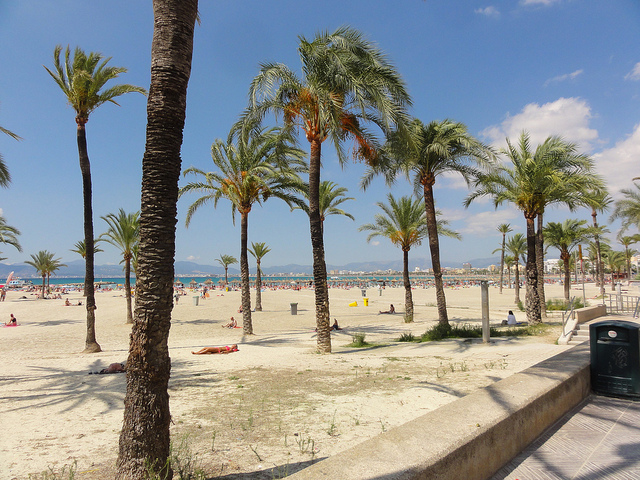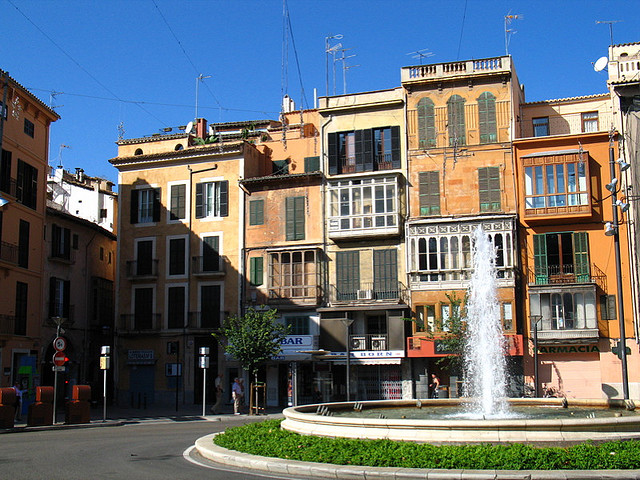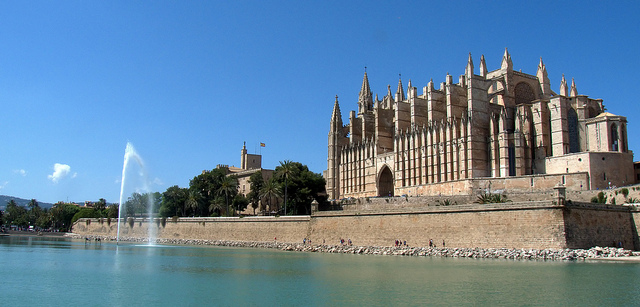In Mallorca’s capital you can blend a beach holiday with all the culture, history, shopping and great food you can handle.
Sea and beaches
There aren’t many European cities that can match the quantity and variety of Palma’s beaches. To the east are long strips of sand, edged by shops, nightclubs and bars. This where you’ll find crowd-pleasing, palm-lined beaches like El Molinar, Playa de Palma and El Arenal. Come here for family fun and a world of watersports.

Image credit Alf Igel on Flickr
West of the city the beaches are more intimate and upmarket. Take Illetes, which is a series of small, craggy coves bathed by pristine sheltered waters. Motorboats shuttle back and forth between super-yachts moored just off the coast, while the occasional paparazzo is a sign that you’re in the company of the rich and famous.
Glamorous marina
The waterfront next to Palma’s historic quarter is a long arc that stretches from the cruise port in the west to the cathedral in the east. There’s a stylish promenade running next to the sea here, where you’ll see row upon row of private yachts glowing in the water on sunny days. Paseo Maritimo runs parallel to the sea and offers a mix of cafes, boutiques and upmarket bars.
Sophisticated old-town
Historic Palma is lovely, with that classic Mediterranean tangle of narrow cobblestone streets and weathered apartment buildings with wooden shutters and iron balconies. You might notice slight changes in the character and building styles depending on where you are in the old-town. There will be lots of little surprises if you keep your eyes peeled.
Image credit: inthesitymad on Flickr
The Moorish part is just to the west of the cathedral, in from the waterfront and where the stone streets are a little broader. Here there are large wooden doors, two metres across and hiding beautiful courtyard houses. This part of the old-town is quieter and more residential, contrasting with the bustle of streets like Passeig des Born to the east of the cathedral.
Surprising heritage and culture
The Cathedral is as grand as they come, and bears remarkable similarities to the Norman cathedrals of England and northern France. It was started in 1229, but took almost four centuries to complete.
Image credit: kismihok on Flickr
Also impossible to miss is Castell de Bellver, which is an imposing circular fort sitting atop a hill on the western side of the city. This structure is from the 1300s and is very well preserved. Head inside to see a museum of the city’s history. If you visit the city in summer, see if you can catch one of the many events taking place in the keep’s courtyard.
If 20th century art is your thing, track down the Es Baluard, the city’s premier museum, with a collection that includes works by Picasso and Miró. The Juan March Foundation Museum is another great choice, with more than 70 pieces including paintings by Salvador Dalí.
Vibrant squares
Head into the heart of the old-town to see the effortlessly elegant Plaza Mayor, a large arcaded square enclosed by grand old apartment buildings. Come here for an al fresco meal or coffee in a stately setting.
Plaza España is on the northern edge of the old-town, and is a true landmark, always full of life and the place where you can appreciate the hum of daily life in a modern city.
Endless shopping
Generations of well-to-do visitors and locals have ensured that Palma has a great range of upmarket shops. Dotted all across the city, but especially in the old-town are boutiques, high-end artisan stores and branches of all the luxury fashion houses.
More affordable high-street options like Zara and Mango are here too of course. The best streets are Sidnicat, Sant Miquel and Alexandre Rosselló.
Eclectic dining
Near the waterfront is a cluster of restaurants, where you can try traditional Spanish fare, like tapas and Paella. With a little knowhow you can also track down some innovative little eateries, showcasing the best of New Spanish Cuisine, as it’s called.
Mallorcan wine is on the rise. Vines had been cultivated here since Phoenician times, but were practically abandoned in the 19th Century. Since tourism arrived on Mallorca in the 60s, care has been taken to revive the old industry. Cellars dotted around the old-town are a great way to get introduced to one of the island’s best-kept secrets.
Get to Palma de Mallorca in ten minutes from Drivalia´s car rental depot at Palma de Mallorca Airport (PMI).
air max 90 womens nike air max plus nike air max 90 yellow black 95 air max infrared air max 90
 Sweden
Sweden



